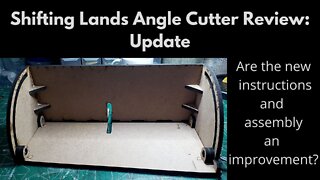11-45 Cassette Shifting Update
Finally dialing in the 11-45 10sp Garbaruk cassette shifting.
While I did ride the 11-45 cassette for about 7 months, it always had a ghost shifting problem in the largest cogs whenever there was a lot of tension in the chain. I could never duplicate this on the bike stand and the nearest spot to test this was about 15 miles ride from home. This made it hard to find a cause for this issue. A possible cause of this issue is frame flexing under load, that's why it works fine on the bike stand. This is with a new chain and a new cassette.
After moving the rear axle back 10mm, I found that this had a similar effect to adjusting the B-tension screw. Both helped to increase the clearance and distance between the jockey pulley on the rear derailleur and the large cog. Along with that adjustment, I also followed the Park Tool Rear Derailleur Adjustment video:
https://youtu.be/UkZxPIZ1ngY
Although not stated in the video, those instructions are for a Top-Normal rear derailleur where the spring pulls the RD out to the small cog.
However, since I have a Rapid-Rise RD, I needed to reverse all the instructions. That is, swap high and low limit screws, small and large cog and large and small chain ring. The key point is to move the rear shifter and back off the barrel adjuster on the RD cable so it's slack. Whatever end of the cassette the RD ends up at is what you adjust first. In my case, with the Shimano XT M770-SGS Rapid-Rise or Low-Normal RD, the internal spring pulls it to the large cog. Thus, set the Low limit screw first, using the small ring up front. Then, set up the indexing as the chain drops onto the smaller gears. Finally, shift to the big ring up front and the small cog and set the High limit screw.
I have Rapid-Rise RDs on several of my bikes and I really like the way they work. For one, they make the barcon style shifters I use work right. That is that both the front and rear shifters move the same direction to shift up or down. With a Top-Normal RD, the two shifters move in opposite directions and that makes shifting non-intuitive. Also, I like that shifting to the larger cogs is done by spring tension. This makes shifting into lower gears easier and since I do a lot of steep hill climbs, that's a good thing. Sure, if I were a pro bike racer and needed crisp shifting on the top end of the cassette, I would prefer a Top-Normal RD so I could out sprint my opponents. I participated in 2 bike races while I was in college and decided that wasn't for me.
Since the Rapid-Rise parts ended with 9sp MTB, this limits my choice of drivetrain. Since I run 10sp road shifters, I can use the 9sp MTB parts for my 3x10 drivetrain. I'm able to got a 900% gear range out of that setup. Things might be easier if I went with an 11sp RD that's designed to work with larger cassettes, but that would mean replacing my rear hub (it's not 11sp compatible) as well as my shifters. And the 11sp RD is only available in a Top-Normal design.
There's also a good write-up on Sheldon Brown's web page:
https://www.sheldonbrown.com/derailer-adjustment.html
and a discussion of the two RD designs:
https://www.sheldonbrown.com/gloss_l.html#lownormal
Subscribe for more content like this
Comment, rate, share & click the bell icon
And as always, thanks for watching
#budgetmullet #garbaruk
-
 4:21
4:21
Black Sun Boxing 黑日拳法
2 years agoShifting Update: Dirt Angels?
2 -
 9:28
9:28
TheCraftyDM
2 years agoShifting Lands Angle Cutter Review: Update
38 -
 13:18
13:18
TheCraftyDM
2 years agoThe Arena Update #1 and a Shifting Lands Subscriber Giveaway!
29 -
 4:16
4:16
hutchdw77
1 year agoC306 update
19 -
 5:59
5:59
KSHB
1 year agoAmtrak update
3 -
 LIVE
LIVE
Di bear
9 hours agoFinal Season Mission, Pantheon | Destiny 2
488 watching -
 6:54:43
6:54:43
SquallRush
11 hours agoAthenian Rhapsody!
36K7 -
 1:47:01
1:47:01
Real Coffee With Scott Adams
9 hours agoEpisode 2492 CWSA 06/01/24
48.4K51 -
 2:08:10
2:08:10
LFA TV
9 hours agoEP 47: Miles Guo Trial Special with Special Guests - Truth, Betrayal, and Fox Hunt | WHISTLE BLOWERS 6.01.24 12pm EST
48.3K14 -
 1:13:59
1:13:59
Tactical Advisor
8 hours agoVault Room Tour/Unboxing- Vault Room Live Stream
42.8K3